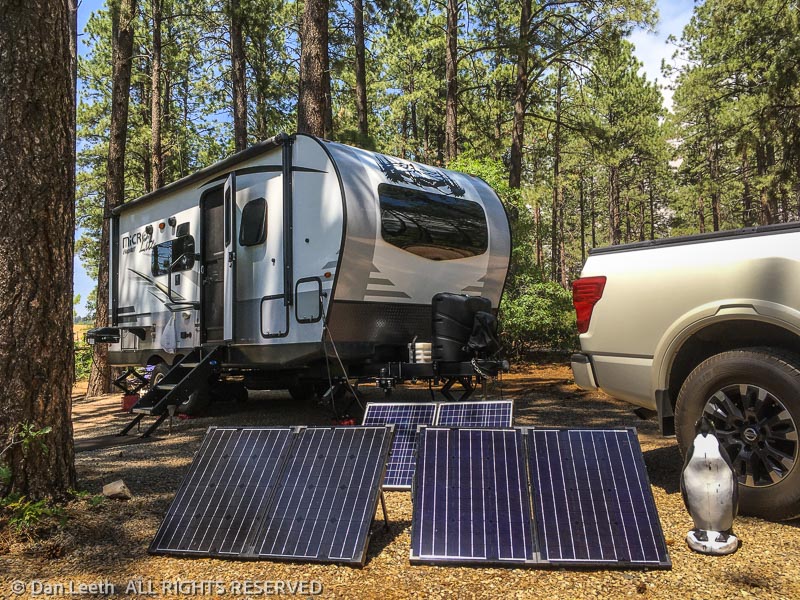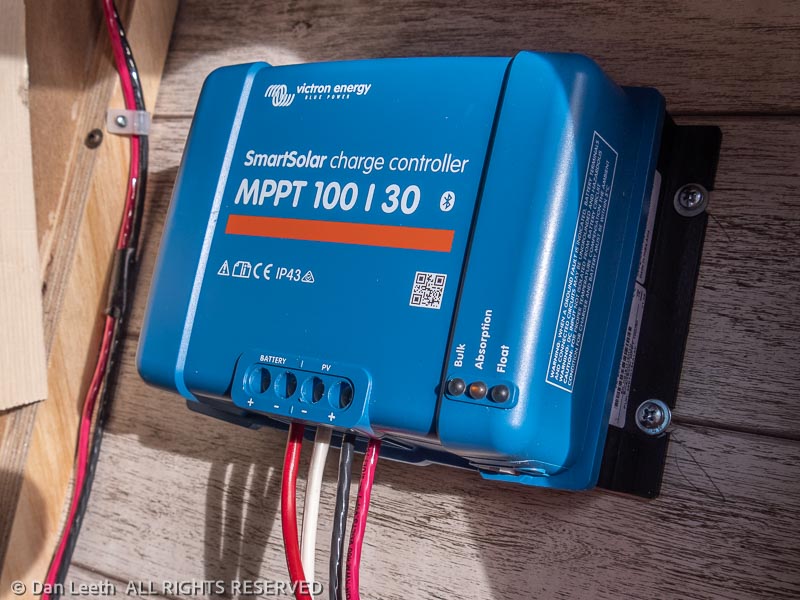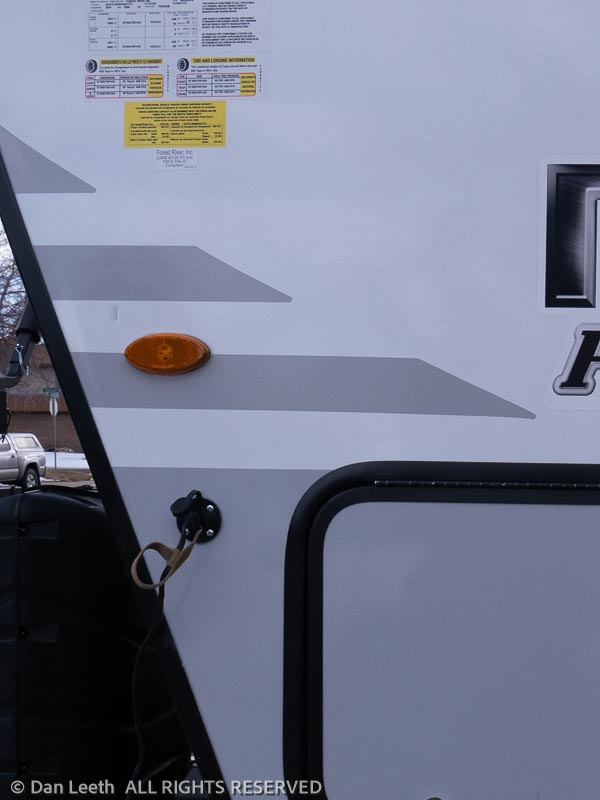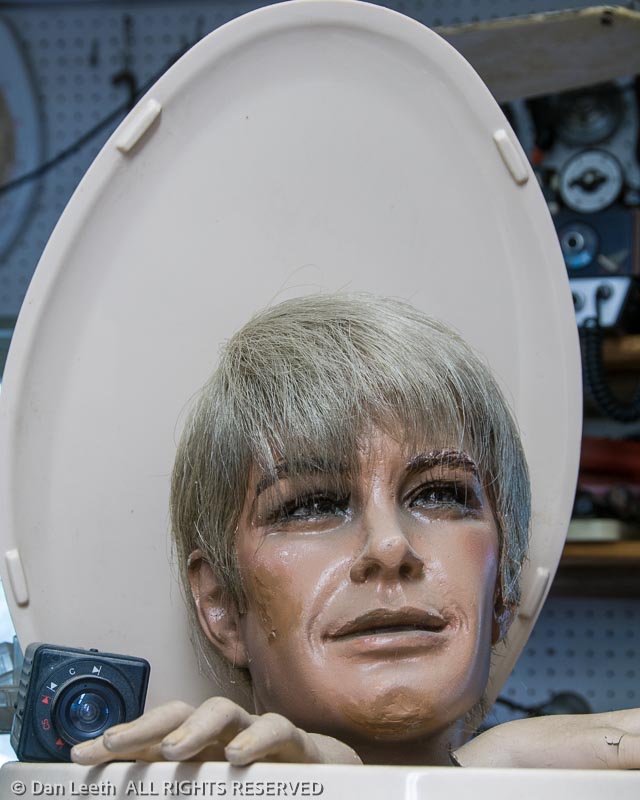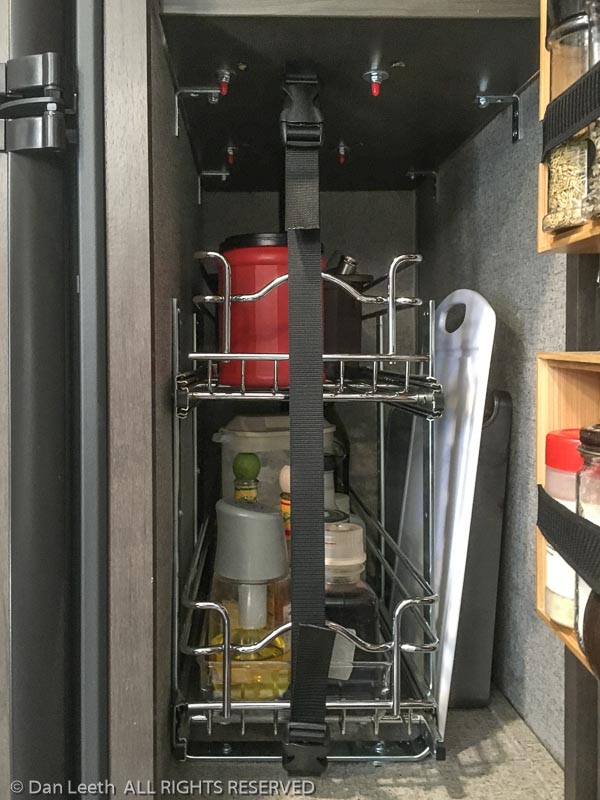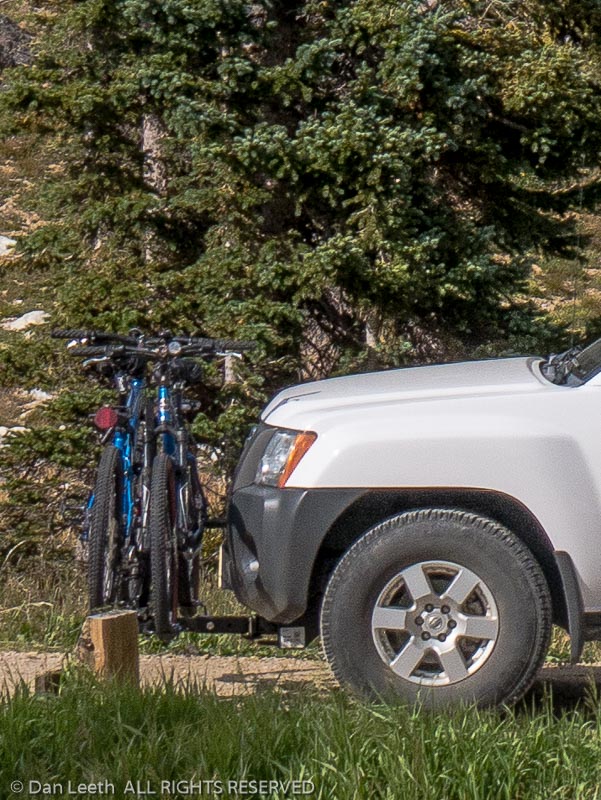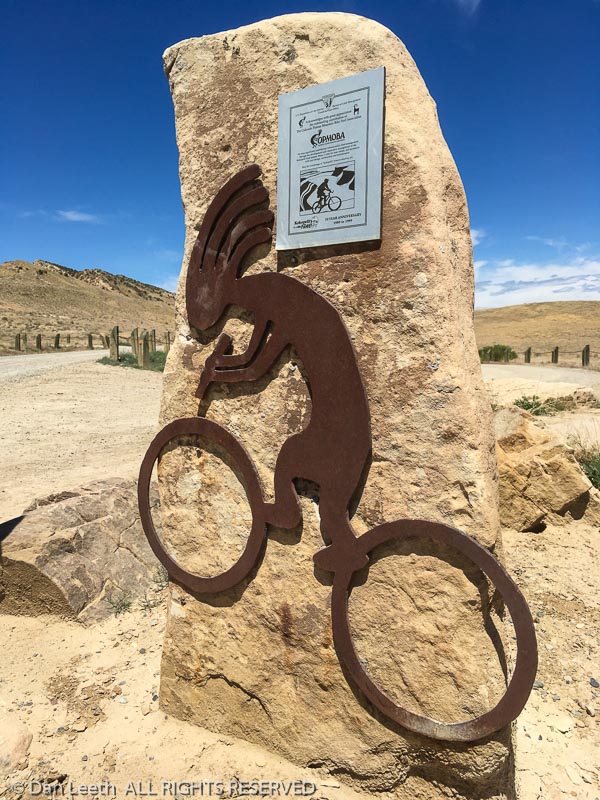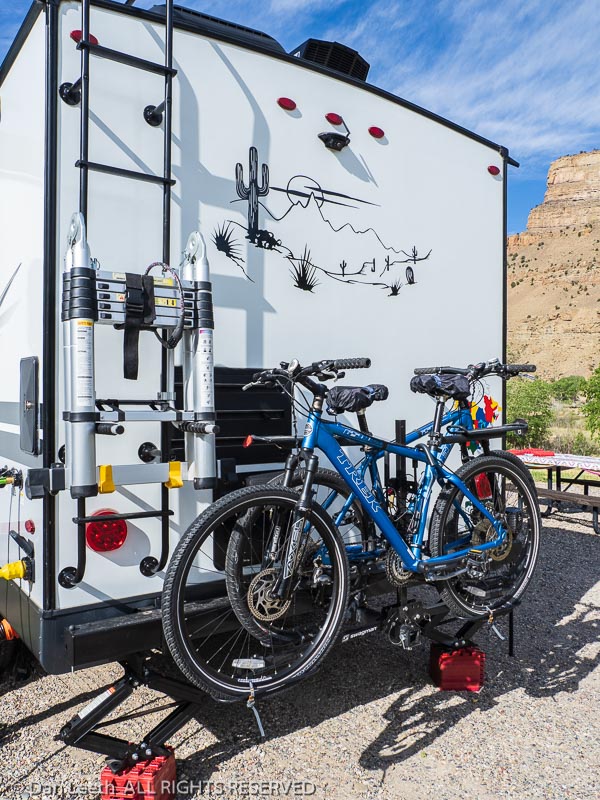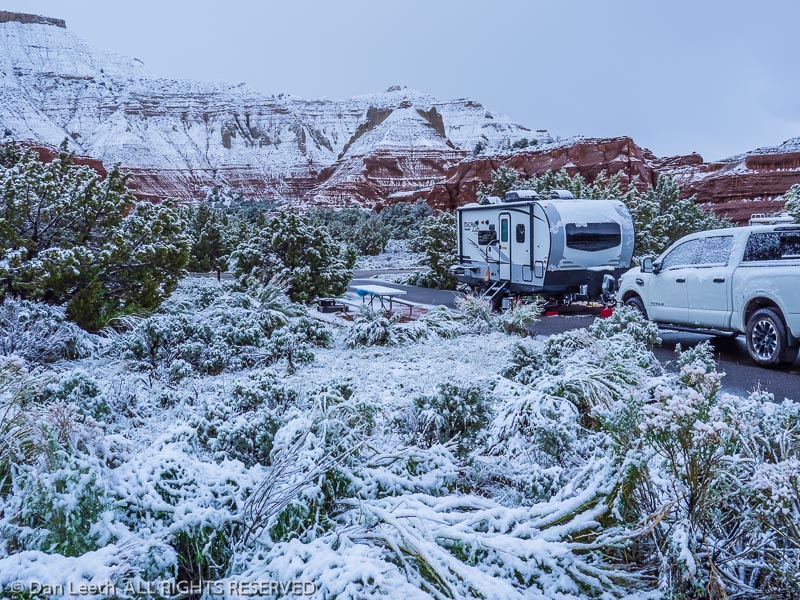While our new home is being built here in Colorado, we’re staying in our trailer at a nearby RV park for the winter.
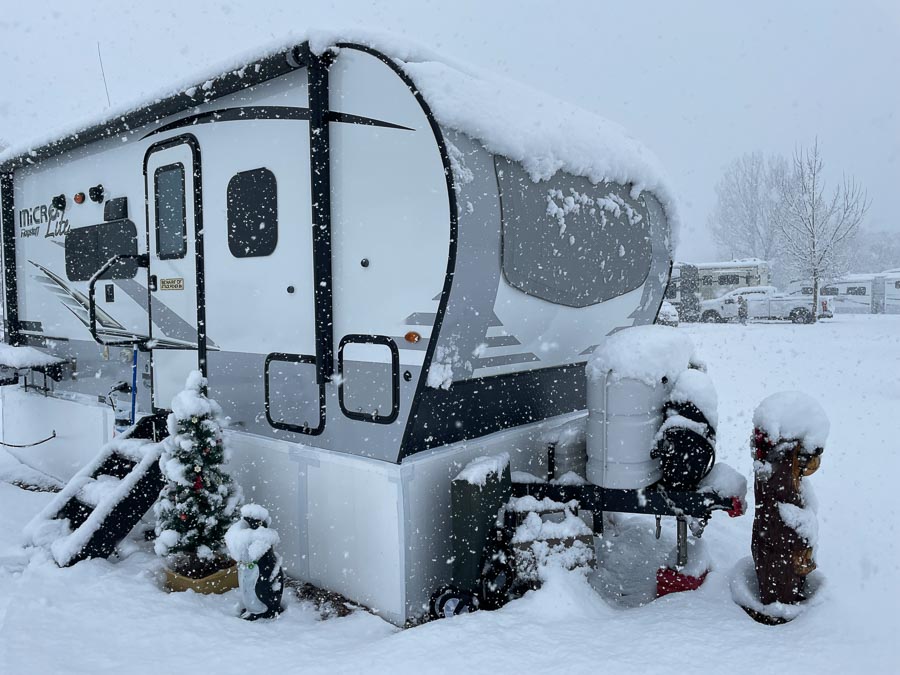
I’m not an expert, but here are a few things we’ve done to survive temperatures that are consistently in the teens or lower at night (Fahrenheit) and seldom reach the 40s in the daytime.

The first thing we did was buy a heated water hose. This one, made by Camco, has a temperature sensor and has not failed us yet.

To insulate the connection into the trailer, I attached a 90-degree brass fitting onto the trailer input and covered it with a foam pipe insulating elbow, which I bought for a few dollars at Lowe’s.

At the other end, I wrapped one-inch, pipe insulation from Lowe’s around the hose to help retain some of the heat and provide a bit more protection where it lies on the ground.

The pipe insulation doesn’t bend easily, so I only put it on the top 2/3 of the hose length.

The second thing we did was put Styrofoam insulating panels around the trailer undercarriage. We went with ½-inch panels to begin with, but had to add a second layer of one-inch panels in places. The thinner panels did not hold up to high winds. They’re held together and to the trailer with white, three-inch Gorilla tape.

Temperatures in the insulated “crawl space” under the trailer (left thermometer) have been consistently eight to 10 degrees warmer than the outside temperature (right thermometer), seldom dropping below freezing. That means less heat loss through the floor and warmer temperatures on bare feet at night.

I noticed that others in the RV park who put up undercarriage panels did not leave a place to access the slice valves for their gray and black water tanks. Even though the experts say not to do so, my neighbors just left the valves open. We did the same. Our sewer hose is extremely short and has a steady drop. Whenever we flush or drain water, it goes straight to the sewer. It’s worked perfectly for us, with no icing up and no poopsicles yet, but this is Colorado, not Minnesota.

To keep warm air from escaping up through the air conditioner, a neighbor insisted we should put a cover on the AC unit. I’m not sure it helps, but it doesn’t hurt and didn’t cost much.

Inside, we put these covers over the Maxx-air fan openings. They’re held on with magnets taped to the inside of the vent frame. They can be loosened or removed if need be to reduce condensation. At $40 each, they’re pricey but they seem to work.

To keep the water pipes, which run near the outside walls, from freezing, we keep the pantry, water pump and water heater doors open. (We removed the panel the factory has inside those bottom compartments a long time ago.)

To protect the outdoor shower nozzle from freezing, I placed a piece of thick foam between the door and the plumbing. It’s not elegant, but it’s worked. Best of all, if I want to bathe outdoors in frigid weather, I can simply remove the foam pad and turn on the shower.

To heat the place, we have the factory furnace, which has been burning up about a gallon of propane every day. Fortunately, our RV park offers discounts on propane refills with free pickup and delivery to our trailer.

Adding to the furnace heat, we use a small space heater. It can be moved around, allowing us to put the heat wherever we want it. Those of us on monthly space rentals pay for electricity, so space heater heat doesn’t come free, but it sure is handy.

Another problem we’ve had to deal with is condensation. While the trailer can be 70+ degrees inside, the walls hover around 50 degrees or lower. Damp walls from condensation could be found in closed areas such as the inside of closed cabinets. We now keep all cabinet doors ajar during the daytime and wide open a at night.

Since the area behind the Murphy bed is closed, we now prop the frame open just a bit at the top, which seems to help. The pillow jammed in there is to keep it all in place. Yes, we could just leave the bed down all day, but we like having the couch to sit on.

I found condensation building up in one of the storage compartments. To help keep it at bay, I added a small, 110-watt heater that runs 24/7 in the starboard storage area. It also helps to keep the wine from freezing.

And finally, to help mitigate condensation, we’ve added a small dehumidifier. We’ve also changed a few of our moisture-adding activities. Instead of showering in the trailer, we now use the RV park’s facilities and I try to refrain from doing dishes until my wife, the chef, threatens me with bodily harm if I don’t wash up her favorite spatula.
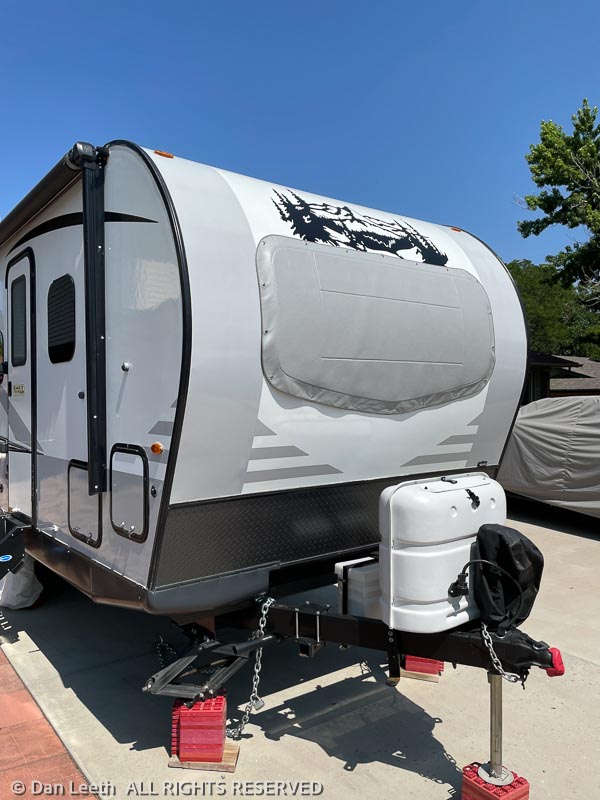
One final piece of equipment that has helped us survive the winter is the padded cover we placed over our front window last summer. We installed it to protect the glass from rock chips and breakage on the road. I thought about removing it while we remain stationary in the RV park, but my wife suggested we keep it on for its insulation value. To reward her thoughtfulness, I’m going to wash up both of her spatulas.









